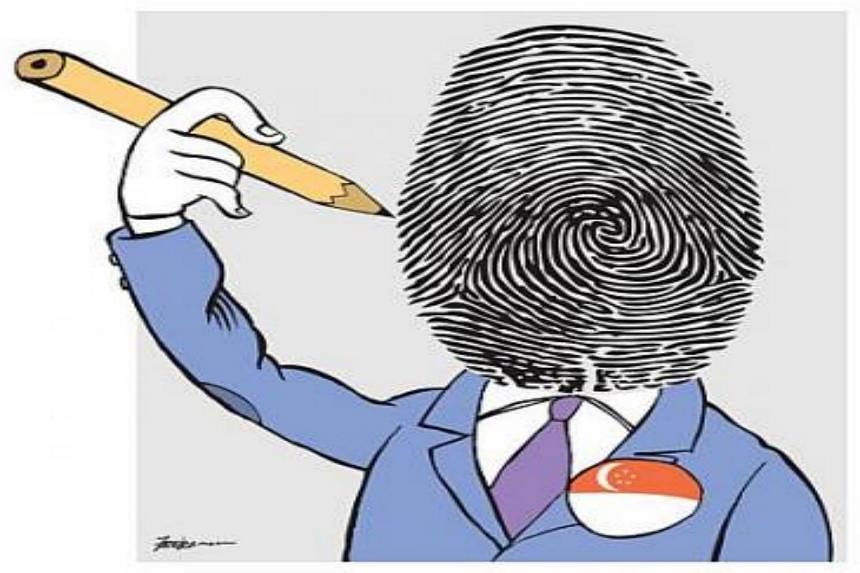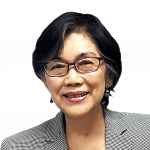WITH National Day around the corner, it is a good time to reflect on Singapore's national identity. Writers, columnists, politicians, intellectuals, artists, and the man and woman in the street have their own take on identity.
I see identity as never static. It evolves, expands, changes and may revert, responding to domestic developments and global changes.
In Britain, after hundreds of years of historical and constitutional evolution, because of the move for Scottish independence and the influx of new immigrants, Prime Minister David Cameron recently called on the British people to promote "British values" and to bring back "Britishness" into the curriculum in the schools.
For countries gaining independence with decolonisation, "nation-building" was seen to be the main game.
"Nation-building" came with its twin, "identity creation". And there is an ongoing debate on whether identities are created top down or evolve bottom up.
The process is both. At the birth of the nation, the initiative comes from the founding leaders, expressing the values of the people and reflecting the historical process. Over time, these values are burnished and reinterpreted. But identity is also organically reshaped by the way people interact and live.
On the cusp of our 49th National Day, I thought it might be appropriate to reflect on the seminal struggles Singapore went through before Independence in 1965 and as it built its identity in the first decades. Who we are has been shaped by the outcomes of these episodes of history.
I would say Singapore went through three seminal struggles in its young history. The first struggle was over our political-economic identity - communist or non-communist. The second was political - our territorial identity - interpreted as whether to go for merger with Malaya or not.
The third was over cultural identity shaped by the language policy.
Communist or non-communist
SINGAPORE'S eventual triumph against the communists was not preordained. This fight was over the ideological direction and the geopolitical orientation of Singapore. It was the time of the Cold War. The establishment of a communist government in China in 1949 committed to exporting revolution overseas reset the politics in Asia. There were communist parties in every South-east Asian country, operating underground and in the jungles.
The Malayan Communist Party operated in Malaya and Singapore. After the war, conservative parties and radical parties popped up on the Singapore political scene.
What was unusual in Singapore was that a group of moderate leaders were prepared to form a united front with the communists to fight colonialism. The People's Action Party led by Mr Lee Kuan Yew collaborated with the communists, but internally there was an intense fight between the two factions.
This struggle led to the split of the PAP and the emergence of the Barisan Sosialis. These developments pushed Malaysia's then Prime Minister Tengku Abdul Rahman, hitherto cool to merger, to unexpectedly propose the formation of Malaysia - an entity comprising Singapore, Malaya, Sabah and Sarawak - in May 1961.
He could not have been more frank: "We can see the threat of the communists. If I did not see this danger, I would not be bothered with the other territories like Singapore, Sarawak and North Borneo."
Once Singapore got into Malaysia in 1963, subsequent developments proved to be game-changing. The consuming issue of politics for Singapore shifted to communalism and racial politics. The formation of Malaysia resulted in the sidelining of the communists and pro-communists.
The legacy of this struggle was the PAP's adherence to democratic socialism to counter communism. I believe Mr Lee's dedication to zero tolerance for corruption began with his determination to fight the communists and to provide a model of good governance.
As democratic socialists, the PAP supported public housing and public investment in education and health. Once in government, however, it drifted right, seeing the abuses and excesses of the welfare state in the West. Reaganomics and Thatcherite ideas cutting back Big Government and promoting market forces found resonance here.
In the last few years, there has been a shift to the left in the social policies of the PAP, responding to growing inequalities in society exacerbated by globalisation.
Singaporeans socialised for decades by the philosophy of democratic socialism share an egalitarian outlook and believe in the state's provision of social safety nets. There is wide support for the Government's moves to increase assistance for the poor and disabled. In the United States and Britain, such policies are a matter of fierce debate.
Merger with Malaya or Singapore alone
THE second formative struggle was over territorial identity.
Under the British, Singapore was administered along with Penang and Malacca as part of the Straits Settlements. The Malayan Union, formed in 1946 after the war, left Singapore out.
Conventional political wisdom from that moment argued that Singapore should one day merge with Malaya if it were to attain independence. Very few believed Singapore could exist without its peninsular hinterland. Every political party subscribed to this mantra.
But when it happened, merger with Malaysia lasted all of 23 months, from September 1963 to August 1965.
The relationship did not work in spite of careful delineation of the financial arrangements and powers over tax and education. Left ambiguous was the fundamental question which sooner or later would have to be addressed - who should control political power in Malaysia? Was it going to be a "Malaysian Malaysia" as Singapore advocated or would race-based politics play a bigger role?
The PAP's "precipitous" entry in the peninsular Malayan elections in 1964 was highlighted across the Causeway as the reason for the deterioration of relations. At heart, it was about the challenge to Malay power - and specifically to the power of the Malay-based party Umno (United Malays National Organisation). This short period exposed Singapore to racial politics and rhetoric at its most rancorous and vicious.
With hindsight, if the PAP did not force the issue early, it would have come later. The May 13 riots in 1969 were about the challenge to Malay power. It was made constitutionally clear in 1971 that Malaysia was to be at its core a Malay polity with Malay symbols of power. That has been the identity of Malaysia since.
Separation on Aug 9, 1965, sent Singapore into a different orbit. Singapore set out to create an identity of a city state, a nation state with its own unique model of race relations.
A language policy for a multilingual nation
CHOICE of language is the third issue where Singapore's choice shaped its identity.
New states with heterogeneous populations face the difficult choice of adopting a language policy without accompanying conflict and bloodshed. In 1955, the reorganisation of the linguistic states in India was accompanied by deadly riots. In Ceylon, savage riots followed the introduction of the Sinhala Only Act in 1958, which is considered the root of the Sri Lankan civil war.
In contrast, Singapore's handling of the language policy for a multiracial, multilingual population without violence and bloodshed must be considered one of our country's most significant achievements.
What then Prime Minister Lee succeeded in doing was to convince the majority 75 per cent Chinese in an independent Singapore to accept Malay as the national language and the principle of four official languages.
There are not many majoritarian populations in the world who have given up the claim to majority status for their language. Mr Lee reminded Singaporeans of the new state's location in a Malay archipelago and the strategic necessity of not being mistaken for a "third China".
It was not an easy sell. The politics of language in Singapore was taken up in the 1950s by the communists in Chinese middle schools. Language simmered under the surface and erupted in the open in the politics of the 70s and 80s.
The decision to retain English as the language of the civil service and the courts suggested to parents that if their children were to secure a job in the civil service, they should be enrolled in English schools.
The watershed came in 1972 when Mr Lee argued that every Singaporean should be bilingual. They should learn English as a language of communication among the multi-ethnic population, and to gain access to science, technology and the world. At the same time, each person was asked to study his mother tongue for cultural retention.
This policy was generally accepted as English was perceived by most to be a neutral language for all ethnic groups. In any case, by then, the numbers of students enrolled in the English schools far surpassed those enrolled in Chinese, Malay and Tamil schools. The universities converted to teaching in English to avoid producing two classes of graduates based on language differences - English and Chinese.
That language policy has largely shaped our cultural identity. Singaporeans are united by speaking English, Singlish and our mother tongues. We are "diluted" Chinese, Malays, Indians or Eurasians - we are Westernised up to a point, and our ethnic identities show in varying degrees.
We are Singaporeans.
We have learnt to live with one another's differences. We have other shared cultural bonds in food, music, national service and the school experience, and National Day parades.
Most regard the early identity issues as settled, and they are right. But today, we have new identity concerns and new fault-lines.
Singapore will be arguing for some time over how much "foreign" should be accommodated in the population and identity, and how to deal with the new "culture wars" - I prefer to use "cultural divide" - over family values.
Conservationists and civil society organisations will become more active in the coming years. Many of our young citizens are championing a variety of social causes.
All this is reflective of a nation growing more diverse as it matures and evolves. There is an urgent need for us to talk to one another with civility and learn to negotiate our way through differences.
Our founding values of equality of all races, multiculturalism, multilingualism and multi-religions are a tolerant and inclusive vision. We should burnish and reinterpret the spirit of these values as we deal with new diversity issues.
The writer chairs the Lee Kuan Yew Centre for Innovative Cities at the Singapore University of Technology and Design.


